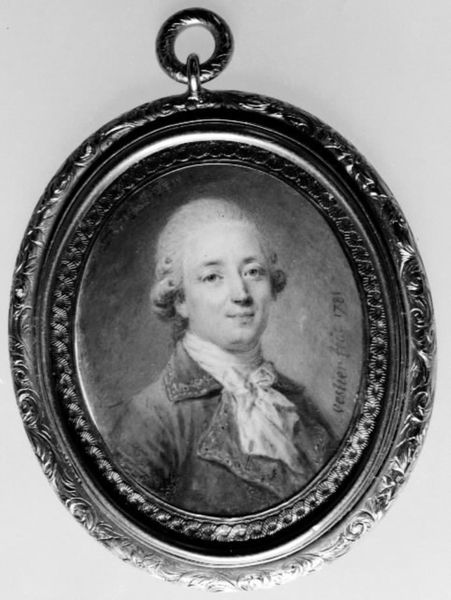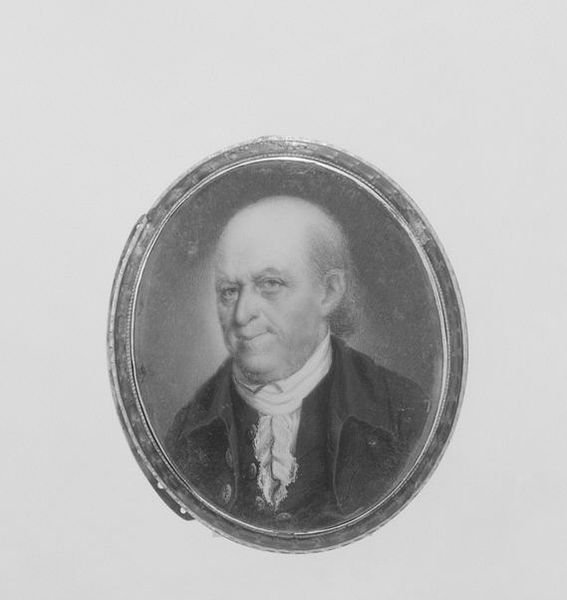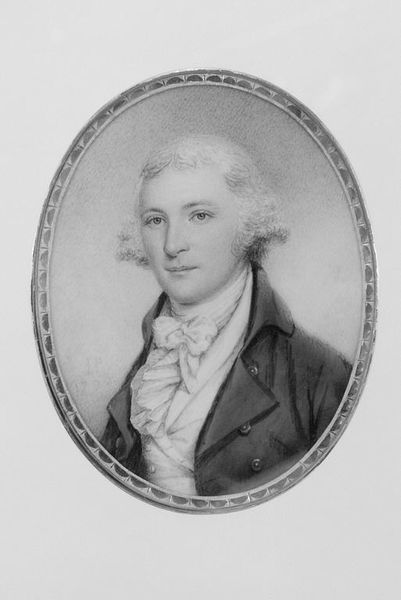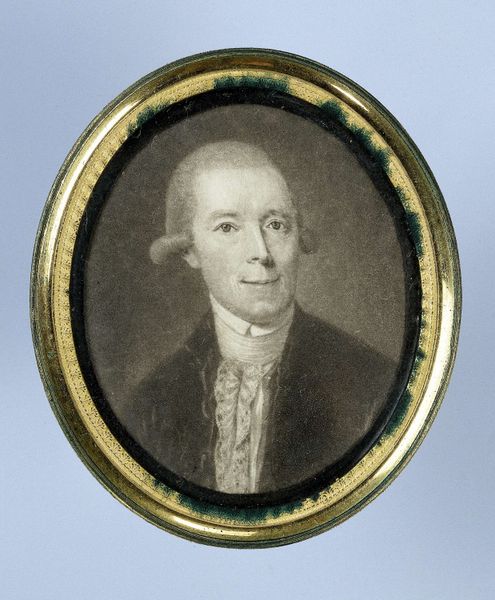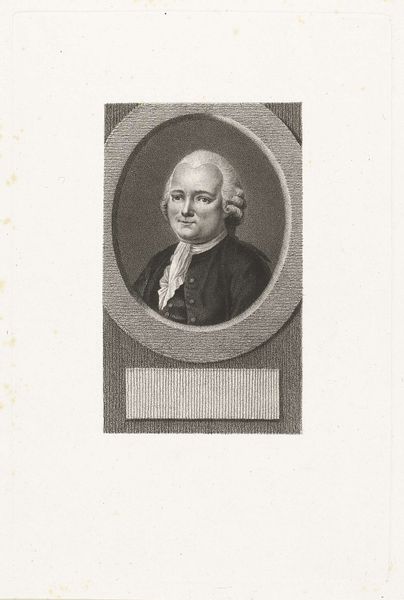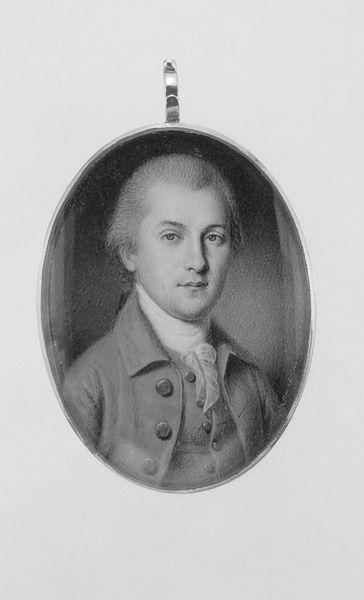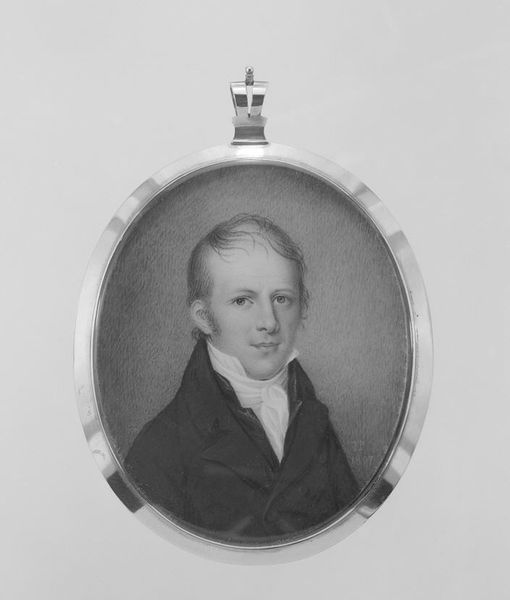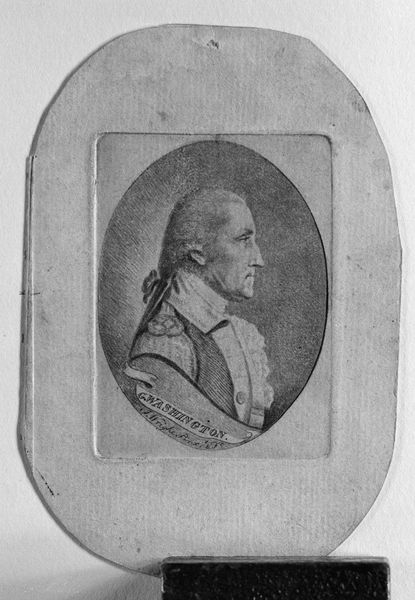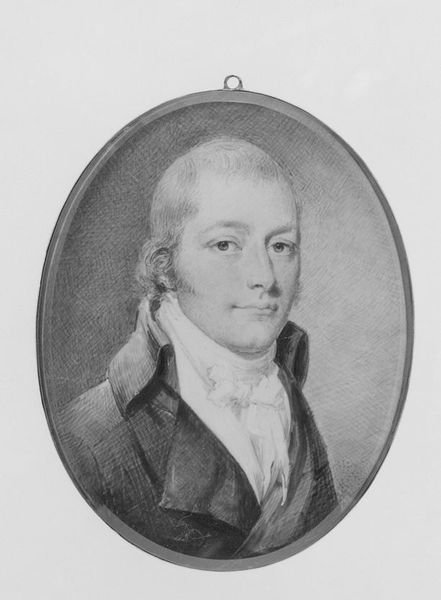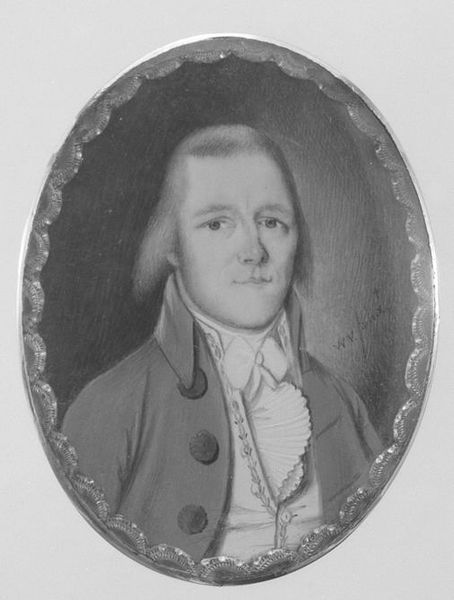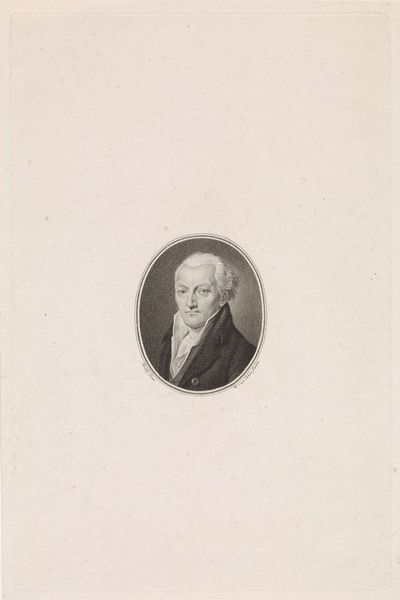
drawing, paper, ink
#
portrait
#
drawing
#
neoclacissism
#
black and white format
#
paper
#
ink
#
academic-art
#
miniature
Dimensions: 1 5/8 x 1 3/8 in. (4.2 x 3.5 cm)
Copyright: Public Domain
Editor: So this is Henry Pelham's "Portrait of a Gentleman," created in 1779. It's an ink drawing on paper, and it strikes me as so formal and contained. What is significant about presenting a portrait in miniature during this period? Curator: Miniatures, particularly portraits, served as vital tools for solidifying social networks and expressing political allegiances in the 18th century. Consider the context: rising merchant classes, evolving notions of civic duty, and increasing literacy rates influencing public opinion. The gentleman depicted, encased in what appears to be a jeweled locket, is literally being framed and presented within very specific social parameters. Who do you think such a portrait was intended for, and what messages might it convey? Editor: I guess it wasn't meant for a huge audience. It seems like something personal, for family or close friends, perhaps reinforcing a sense of belonging or demonstrating status through the refined style and materials. Curator: Exactly! The precious materials surrounding the portrait hint at wealth and refinement. Furthermore, miniatures could be easily transported, fostering a sense of connection across geographical distances and cementing familial or political bonds. Think about how access to imagery, and therefore power, was tightly controlled. Do you notice anything about how this portrait conforms to, or perhaps subtly deviates from, artistic conventions of the time? Editor: Well, it feels pretty academic with its adherence to neoclassical ideals and formal pose, and maybe this speaks to who he is, but the somewhat relaxed expression offers a tiny hint of individuality peeking through. Curator: Indeed, it speaks to a shift that's about to happen: a move toward Romanticism and celebrating individualism that soon follows. Understanding the socio-political dynamics is crucial when examining portraiture, especially in miniature form. What started as an intimate object also reinforced larger power structures. Editor: I hadn’t thought about how even personal items played a part in the public image. This makes me view these objects quite differently. Curator: Precisely. Seeing art through the lens of its socio-political context reveals its multifaceted role in shaping our world.
Comments
No comments
Be the first to comment and join the conversation on the ultimate creative platform.
